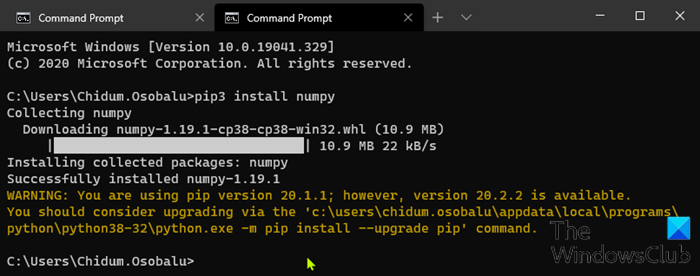
The packages that you install into one virtual environment are isolated from all other environments on your system. Once you’ve activated the virtual environment, then you can install packages into this environment. This module helps you create virtual environments with an isolated Python installation. Python 3 has the built-in venv module for creating virtual environments.

This way, you can ensure that your system default Python 3 version runs the pip command. The -m switch tells Python to run a module as an executable of the python3 interpreter. Notice that you use python3 -m to run pip. In Python, pip has become the standard package manager. JavaScript uses npm for package management, Ruby uses gem, and the. The concept of a package manager might be familiar to you if you’re coming from another programming language. Many Python projects use pip, which makes it an essential tool for every Pythonista. Package management is so important that Python’s installers have included pip since versions 3.4 and 2.7.9, for Python 3 and Python 2, respectively. The name pip is acronym and declaration: pip installs packages. I’ve finished renaming pyinstall to its new name: pip.

The name pip was introduced by Ian Bicking in 2008:

That means it’s a tool that allows you to install and manage libraries and dependencies that aren’t distributed as part of the standard library. So, what exactly does pip do? pip is a package manager for Python. Free Bonus: 5 Thoughts On Python Mastery, a free course for Python developers that shows you the roadmap and the mindset you’ll need to take your Python skills to the next level.


 0 kommentar(er)
0 kommentar(er)
